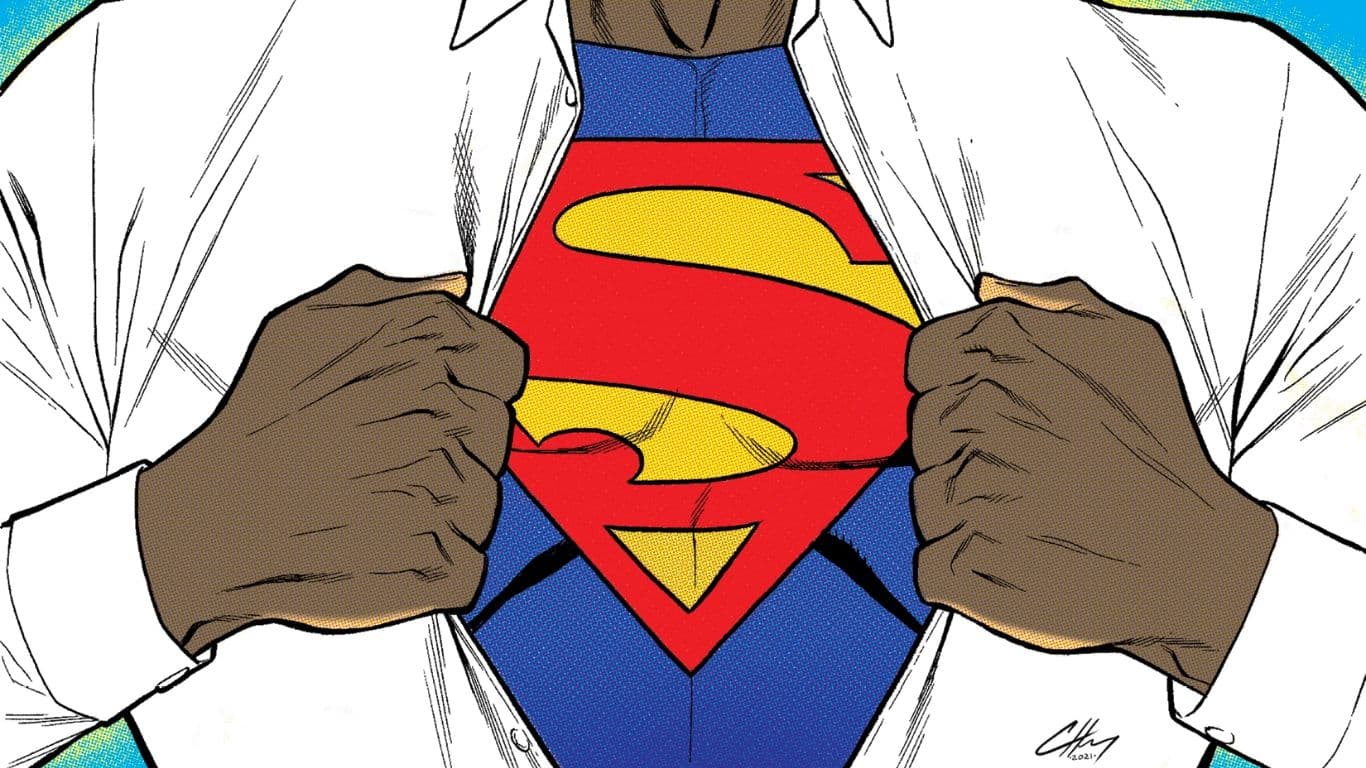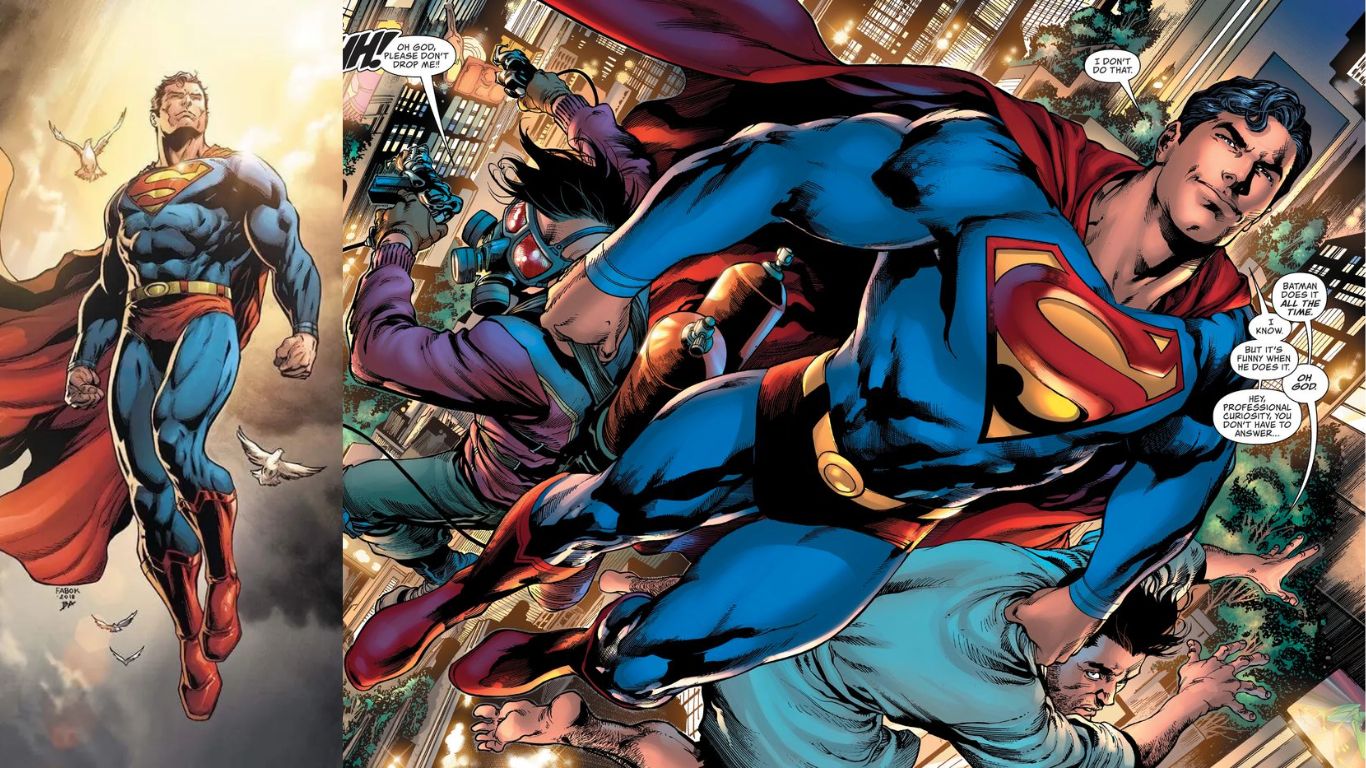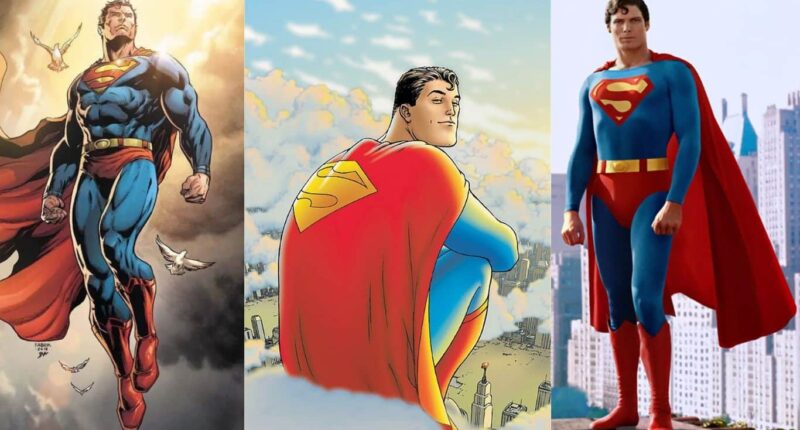What Makes Superman The Ultimate Symbol of Hope in Comics: The cape flutters in the wind as a muscular figure stands atop a soaring skyscraper, his gaze scanning the city below – vigilant, altruistic, and invincible. The image is unmistakable – Superman, the Man of Steel, a beacon of hope and valor in the world of comic books. For over eight decades, this character has symbolized far more than superhuman strength or otherworldly abilities. Superman is the embodiment of an ideal, an emblem of hope that resonates with millions across the globe.
But what exactly makes Superman the ultimate symbol of hope in comics? Is it his extraterrestrial origins, his near god-like powers, or is it his unwavering dedication to truth and justice? Is it his unyielding spirit that never wavers even in the face of the most powerful foes, or is it his inherent goodness and belief in humanity’s potential? As we delve into the rich history, iconic stories, and nuanced character development of Superman, we will explore these questions, and in doing so, unveil the reasons behind the Man of Steel’s enduring status as the ultimate symbol of hope.
In this article, we will journey through the annals of comic book history, examine the sociopolitical factors that shaped the character, and analyze his cultural impact. Whether you are a lifelong Superman fan, a casual comic book reader, or someone simply interested in the intricacies of popular culture, this exploration into the heart of what makes Superman a timeless symbol of hope is sure to intrigue and inspire. The ‘S’ on his chest doesn’t just stand for Superman – it’s the symbol of hope that transcends ink and paper, lighting up the imagination of generations.
The Man of Steel: More than Just a Superhero

Superman isn’t merely an invincible alien from Krypton – he’s an icon embodying the aspirations and ideals of humanity. Born Kal-El but raised as Clark Kent, Superman is an exploration of human potential wrapped in a cape and tights. His otherworldly powers, while fascinating, are secondary to his most significant traits: his unwavering commitment to justice, his deep-rooted compassion, and an innate moral compass that always directs him towards the greater good. These qualities make him an ideal to strive towards, a guiding beacon of hope in times of despair.
His selflessness and perpetual readiness to safeguard humanity reflect our own aspirations for altruism, heroism, and moral rectitude. The tales of Superman speak to our better angels, encouraging us to believe in the power of good and the capacity for each individual to make a difference. Truly, Superman transcends the realm of comic book heroes and stands as a timeless symbol of hope.
Superman’s Genesis: From the Great Depression to the Present

Superman’s genesis is deeply rooted in the socio-political climate of the Great Depression, a time when hope seemed a scarce commodity. Created in 1938 by Jerry Siegel and Joe Shuster, two sons of immigrants, Superman was a beacon of hope during a period of global uncertainty and strife. His tale of humble origins in Smallville, Kansas, his alter-ego as the unassuming reporter Clark Kent, and his rise as the savior of Metropolis struck a chord with the public, offering them a symbol of resilience and hope.
Over the years, Superman has evolved with the changing times, addressing contemporary issues and reflecting societal norms and anxieties. Whether it’s standing up against injustices, fighting for equality, or battling cosmic threats, his storylines have consistently strived to uphold the ideals of truth, justice, and the ‘American Way’.
In the present day, Superman remains a significant figure in pop culture, symbolizing the enduring potential of humanity to rise above adversity. His journey from the backdrop of the Great Depression to the complexities of the modern world underscores his adaptability and enduring resonance, fortifying his status as a timeless symbol of hope.
Unpacking the Superman Ethos: An Embodiment of Hope

At the heart of Superman lies an ethos deeply rooted in hope and compassion. Created by Jerry Siegel and Joe Shuster, Superman, the Kryptonian turned Earthling, represents a universal symbol of hope, symbolizing the potential for goodness in all of us. His beginnings as a refugee from a doomed planet and subsequent adoption by the loving Kent family imbue him with an innate understanding of humanity, empathy, and kindness. These qualities become the cornerstone of his character as he navigates life as Clark Kent and Superman.
But it’s not just his superhuman abilities that make him an emblem of hope. It’s his relentless optimism, his unwavering belief in humanity, and his ceaseless fight for justice, truth, and equality. His strength is awe-inspiring, yet it’s his moral compass, his humility, and his ability to empathize with those he protects that truly make him a beacon of hope. His character embodies the maxim that power doesn’t have to corrupt and that strength can be used to protect and inspire rather than to control and intimidate.
Superman’s ethos reaches beyond his otherworldly abilities and epic adventures. It’s a testament to the power of kindness, resilience, and unyielding hope, inspiring generations of readers and reinforcing his status as the ultimate symbol of hope.
The Cultural Impact: Superman’s Resonance Beyond Comics

Superman’s cultural impact stretches far beyond the boundaries of comic books. Since his first appearance in 1938, Superman, also known as the Man of Steel, has infiltrated a multitude of cultural spaces, becoming a globally recognized icon symbolizing hope, justice, and moral righteousness. His influence has penetrated various media formats – from television and film to video games and merchandise – shaping their narratives and themes.
His iconic ‘S’ emblem and the distinct red and blue suit have become universally recognized symbols that represent strength, resilience, and an unshakeable commitment to safeguard humanity. Moreover, Superman’s character narrative has inspired the creation of countless other superheroes, effectively helping shape the course and evolution of the comic book industry.
His enduring resonance has also found its way into academic discourse, with scholarly debates exploring his character as a critique and reflection of societal norms and ideals. Additionally, Superman’s status as a cultural icon has influenced modern language, birthing phrases such as ‘Superman effort’ to describe extraordinary feats.
In essence, the cultural resonance of Superman is a testament to his enduring appeal and relevance, solidifying his legacy as the embodiment of hope in popular culture, thereby transcending his origins from the comic book panels to becoming a staple of modern myths.
Enduring Legacy: Superman’s Timeless Symbolism of Hope

Superman’s enduring legacy as a timeless symbol of hope has reverberated through the annals of pop culture, serving as an inspiration for generations. Created in 1938, the Man of Steel emerged during a period of economic depression and impending war, providing a beacon of hope for millions. His invincible strength, unwavering morals, and incorruptible character came to represent a potent symbol of optimism and resilience in the face of adversity.
Over the decades, Superman’s character has evolved, mirroring the changing dynamics of society, yet his core essence – a beacon of hope – has remained unwavering. The optimism and compassion inherent in his persona continue to inspire countless individuals, influencing other media forms, spawning a multitude of other superheroes, and even shaping societal discourse.
In an increasingly cynical world, Superman’s undying belief in the good of humanity stands as a powerful testament to his enduring relevance. Whether it’s battling cosmic threats or standing up against social injustices, his actions consistently resonate with the message of hope. Superman’s legacy, therefore, stands as a testament to the enduring power of hope, serving as a reminder that no matter the darkness, there will always be a beacon of light.
Also Read: The Story and Evolution of Superman’s Iconic Logo



